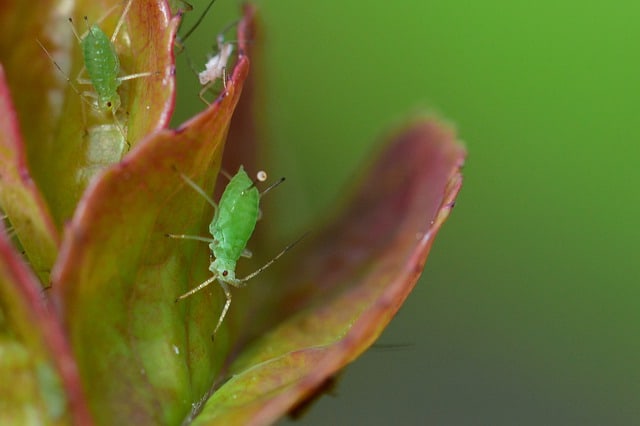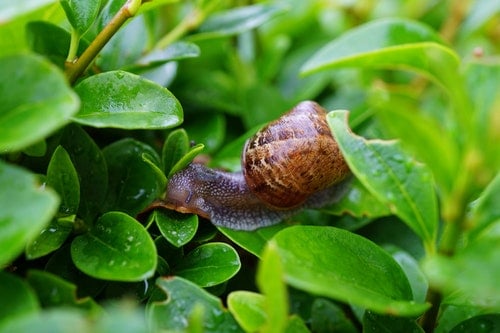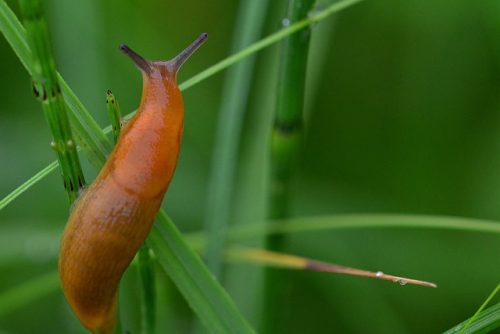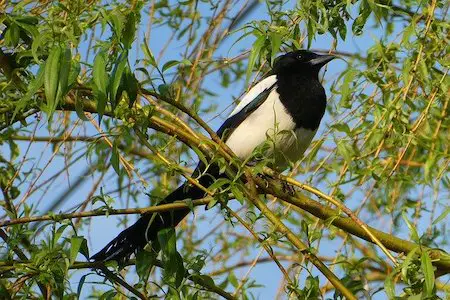If you own a vegetable garden, then controlling the garden pests and protecting your crops from damage is something you’ll have to deal with. Usually, gardeners are quick to opt for using harsh chemicals like insecticides. However, there are other ways to control pests and still maintain a healthy garden void of chemicals. This article is focused on guiding you through the right methods of dealing with these little creatures.
We have some common pests which most gardeners will relate to. We’ll discuss them and also reveal ways you can protect your plants from getting harmed by them. From preventive techniques to ways you can identify the pest feasting on your plant parts and effective control measures, this guide covers it all. Stick to the end to find out how you can grow organic, healthy, and tasty vegetables without being sabotaged by garden pests.
Let’s examine some of the common garden pests:
Common Vegetable Garden Pests
Aphids
You were probably expecting aphid to be the first on the list, well it has earned its spot here. Aphids are quite common and they exist in different species. They usually form little groups on vegetable plants such as cabbage. They are very small in size, shaped like a pear and can be red, green, brown, yellow, black or grey coloured. The absence or presence of wings on an aphid depends on its life stage and species.
Affected plants: Aphids feed on vegetable plants such as lettuce, tomatoes, cabbage, and kale. They are highly prolific organisms so they can be found in a lot of vegetable gardens.
Damage caused: Aphids drink up plant juices which leads to distortion and affects plant growth. They do so in groups on vegetable plants, especially underneath the leaves.
Prevention technique: Attract useful predatory insects into your garden by planting small flowers in your garden.
Control: To get rid of aphids on your plant, you can spray them with water using a hose. Hand-squishing is another effective method to adopt.
Organic products: Insecticidal soap and horticultural oil will help you deal with serious aphid infestation.

Asparagus Beetle
From the name, you should tell this pest favours asparagus plants so if you’re growing some asparagus in your vegetable garden, look out for these. They are a quarter-inch long and black with some yellowish spots. You’ll also find a small red mark at the back of their heads. Their larvae look similar to a grub with an army green colour and dark head.
Affected plants: Asparagus beetles will only eat asparagus plants
Damage caused: The adults and larvae eat asparagus spears including ferns. A serious infestation will result in brown foliage which is an obvious sign of an unhealthy plant.
Prevention technique: Cut up ferns and remove fallen leaves in autumn.
Control: Use a floating cover to protect your rows during harvest season. Squish any dark eggs you find on your plants and dispose of them. Sweep off larvae on your asparagus plants using a soft broom and they’ll be eaten by useful insects on the floor.
Organic products: Neem-based organic products will help control asparagus beetles in your garden.
Cabbage Worms
Cabbage worms form part of the pest population known to attack vegetable gardens. Adult cabbage worms can have a colour shade anywhere between white and yellowish with not more than 4 black spots on their wings. Their caterpillars are about one inch long, have a greenish colour with a blurry yellow stripe.
Affected plants: They affect all cabbage species, including cabbage, cauliflower, kale, broccoli, radish, turnip and Brussels sprouts. If you have any of these in your vegetable garden, it will most likely attract cabbage worms.
Damage caused: The caterpillars will chew leaves and flower clumps, forming holes on them. A serious infestation can result in total defoliation.
Preventive technique: Birds love to feast on cabbage worms so a few birdhouses in your vegetable garden will keep cabbage worm population controlled.
Control: Use of floating row covers will help protect your plants until it’s time for harvest. Also, you can handpick caterpillars.
Organic products: Spinosad, hot pepper wax and Bacillus thringiensis insecticides are useful products for controlling a cabbageworm infestation.
Colorado Potato Beetle
This pest’s larvae will eat your plant leaves especially potato and tomato plants. Adult Colorado beetles are round-shaped creatures about 1/3 inches long with wing covers, tan and black striped. The larva has a reddish-purple colour with some black dots at its side and its ½ inches long.
Affected plants: All species of tomato plants are susceptible to this pest. Other plants such as potatoes, peppers, eggplants and tomatillos can be affected as well.
Damage caused: The larvae and adult beetle will completely eat up plant leaves until it’s just the veins left.
Prevention technique: Maintain proper hygiene in your garden and practice crop rotation yearly.
Control: Install floating covers to protect susceptible plants until harvest time arrives. The good old handpicking method also works for both larva and adult beetles.
Organic products: Neem insecticides as well as spinosad organic sprays will help take care of this pest.
Cucumber Beetles
The cucumber beetles are characterized by causing bacterial wilt on plants they feed on. We have the striped and spotted species with black stripes and black dots respectively. The fully developed cucumber beetle is ¼ inches in length with a yellowish colour having either stripes or spots. The larvae usually stay underground so you’ll hardly find them.
Affected plants: The entire cucumber family, which includes cucumbers, gourds, pumpkins and squash, are potential hosts. They may also affect beans, beet, corn as well as other vegetable plants.
Damage caused: Adult cucumber beetles form little holes with jagged edges in plant leaves as well as flowers. They transfer bacteria wilt as they feed on plants.
Prevention technique: There are bacterial-wilt resistant plants you can go for instead. Such varieties include, ‘Little Leaf 19’, ‘Saladin’ and ‘Gemini’ cucumbers, squashes and muskmelons. They don’t attract the cucumber beetles.
Control: The same way you control other pests using floating row covers will also work for wading off cucumber beetles. However, you’ll have to take out the cover when plants are in the flowering stage so pollination can take place.
Organic products: Spinosad organic pesticides will be effective for controlling this pest. However, you always have the option of planting resistant varieties so you won’t have to deal with an infestation at all.
Cutworms
Cutworms do a lot of damage to vegetable plants. While other pests feed on leaves, they prefer to cut up plant stems at the floor region. They are either grey or brown moths as adults and they tend to fly around at night. Cutworm caterpillars are 2 inches long, yellow, green, grey or brown and they form a C-shape if disturbed. You’ll find caterpillars few inches below the soil’s surface.
Affected plants: Cutworms prefer to attack young plants. However, cabbage, tomato, kale, broccoli and other vegetable plants are susceptible to this pest.
Damage caused: They chew up the outer stem of seedlings/ young plants at the ground level. If you notice a severed or wilted seedling, it’s most likely the result of cutworm attack.
Prevention technique: You can protect young plants by covering up the lower area using aluminium foil or a tissue paper tube collar; place it half an inch deep into the soil. Practising crop rotation will help as well. It is also useful to till the soil in autumn to expose cutworm pupae to its natural predators.
Control: Lure cutworms with an attractive bait of wheat bran or cornmeal. Of course, you should place the baits close to potential plant hosts. The caterpillars will take up the bait and die as their digestive system will be unable to break it down.
Organic products: Mixing some useful nematode species (Heterorhabdtis bacteriophora & Steinerma carpocapsae) with water and spraying on the soil afterwards can help control cutworm infestation.
Flea Beetles
Although they are tiny in size, flea beetles are popular pests known to disturb vegetable plants, including eggplants and radish. They are about one-tenth of an inch in length and are either brown or black. Perhaps their tiny size makes them move swiftly.
Affected plants: Flea beetles affect different plants, including tomato, radish, eggplant and corn.
Damage caused: They leave little round-shaped holes on plant foliage. Their larvae stay in the ground and tend to consume plant roots as well.
Prevention technique: Crop rotation[1] is beneficial.
Control: The use of floating covers might not be as effective with flea beetles as it may trap some new fleas with your plants. Get some sticky yellow cards and place them over plant tops; they’ll attract and capture the culprits.
Organic products: Clay-based, neem or spinosad products will deal with flea beetle infestation. Useful nematodes can also help combat their larvae when added to the soil.
Mexican Bean Beetles
The Mexican bean beetle is also a common garden pest. Its larva feeds on different beans plant. Adults have a coppery colour and resemble ladybugs with 16 dark spots. Their larvae have a yellowish colour and soft spines.
Affected plants: The Mexican bean beetles larva and adult affect all bean species, which includes snap, lima, runner, pole, and soy.
Damage caused: Both larva and adult will feed on plant leaves. Sometimes they’ll also eat bean and plant flowers. You’ll often find larvae underneath plant leaves if your plants are infested.
Prevention technique: Having beneficial flowering herbs in your garden will lure in predatory wasp which will feed on this pest.
Control: Covering plant rows with floating covers until the flowering time approaches.
Organic products: Spinosad products, as well as hot pepper wax, are useful in controlling Mexican bean beetles.
Snails & Slugs
Slugs are perhaps one of the most disliked garden pests. Snails and slugs are usually confused as insects, but they’re land-dwelling molluscs. Snails have shells and slugs don’t. They both usually leave behind a slime trail as they move. Depending on the species, their colour can be orange, tan, mottled, brown, black or grey.
Affected plants: Snails and slugs love to feed on young plants. They affect various species of vegetable plants.
Damage caused: You’ll find roughly shaped holes in the centre area and margins of leaves on plants attacked by snails and slugs. They love a moist, dark environment so they are active at night or during rainy periods. This means that you’ll most likely not find them on your plants during the day.
Prevention technique: Water your plants in the morning so it dries off during the day. Make your garden attractive for snakes, birds, toads and frogs as they are natural predators of snails and slugs. You can also place copper strips around susceptible plants. These plant pests hate to move on copper because they’ll feel a zap of electricity due to their slimy nature so that’ll keep them off.
Control: If you’re up for it, you can handpick them and drop in a bowl with soapy water (in the evenings or early mornings). The use of beer traps is also effective. However, ensure you empty and fill up the trap each day.
Organic products: Get slug baits with iron phosphate as their active ingredients. Those with methiocarb or metaldehyde will harm other beneficial wildlife and pets as well.

Squash Bugs
Squash bugs are amongst common garden pests and among the toughest to deal with. The adults are 5/8’’, oval-shaped and dark brown coloured. Their nymphs lack wings and are grey. They usually lay eggs in groups and that’s how they feed as well.
Affected plants: The entire cucumber family is a potential host to squash bugs. These include cucumbers, squash, melons, pumpkins, and zucchini.
Damage caused: Both the nymphs and adult will suck juices off plants using their needle-shaped mouths. Affected leaves become mottled and yellowish, eventually, they die.
Prevention technique: Practice crop rotation and plant squash bug resistant varieties. Trellises will help keep developing vines away from the ground.
Control: The use of floating covers until its flowering time will help. Check plants for egg clusters as often as possible and get rid of them. Squash bugs usually lay eggs underneath plant leaves.
Organic products: This will only work on nymphs, not adults. Use neem-based products.
Tomato & Tobacco Hornworms
These two close relatives inflict damage on vegetable plants. Adults are large, night-flying moths with brown or grey coloured wings. Their caterpillars have white stripes on their greenish bodies and a small, soft horn which emerges from their rear region.
Affected plants: The tomato varieties are affected by these pests. Tomatoes, peppers, eggplants, potatoes, and tobacco are potential host plants.
Damage caused: They feed on plant leaves usually around the top area and leave their excrement which look like dark pellets behind.
Prevention technique: Some flowering herbs will attract the specie of wasp (cotesia wasp) that uses hornworms to host their young causing their death later. Plant some of these herbs in your garden to control hornworms.
Control: Check your plants for hornworms as often as you can and handpick them. Be careful not to harm those with the parasitic wasp’s white cocoon.
Organic products: Handpicking hornworms is a very effective control method. However, spinosad and Bacillus thuringiensis will work fine.
Whiteflies
Whiteflies are among the juice sucking plant pest which eventually distorts affected crops. They are tiny creatures resembling a moth and can be found in groups under leaves. They leave their sticky, honeydew excrement behind on plants.
Affected plants: Whitefly affects various plants, including peppers, tomatoes, citrus potatoes etc.
Damage caused: The adult whitefly and nymphs drinks up plant juices which result in wilting, forming of yellow leaves, and when things get worse leaf drop.
Prevention technique: If you intend getting young plants from a garden centre or nursery, do a quick check to ensure there are no whiteflies on them
Control: Place some sticky yellow cards above susceptible plants to lure and trap adult whiteflies.
Organic products: The use of horticultural oil, insecticidal soap, hot pepper wax and neem products will help control whiteflies in your garden.
Final Thoughts
Unfortunately, you’re not the only one who looks forward to eating some fresh produce from your garden. Garden pests are attracted to your plant parts and will feast on wherever they can if you don’t intervene. Pests will damage your crops and deprive you of the fruitful, healthy harvest you’ve dreamed of. Well, the good news is there’s a lot you can do to prevent or remedy plant infestation.
Hopefully, this article will help you get started. Enjoy!
Glossary
[1] Crop Rotation – Link






